Being a Filipino, I learned that any celebration isn't complete without pancit, but Pancit Malabon holds a special place in my heart. I first mastered this recipe during my Lola's 75th birthday celebration when she guided my hands through the process of creating that signature orange-hued sauce in her tiny kitchen in Cavite.
The moment my relatives' eyes lit up at the sight of those thick, golden noodles loaded with fresh seafood, I knew I had unlocked something special. This isn't just your ordinary pancit, it's a celebration in itself, carrying the rich coastal flavors of Malabon City in every bite. The combination of plump shrimp, tender squid rings, and that indulgent crab fat (aligue) sauce transforms simple noodles into something truly extraordinary.
After years of perfecting this special pancit malabon recipe, I'm excited to share my family's version that never fails to steal the show at every handaan.
Jump to:

Why You'll Love This Recipe
- Restaurant-Quality: Achieve the same rich, flavorful taste you'd find in Malabon's famous seafood restaurants
- Impressive Presentation: The vibrant orange-yellow color and abundant toppings make it a showstopping centerpiece
- Customizable: Easy to adjust seafood types based on availability
- Make-Ahead Friendly: Components can be prepared in advance
- Complete Meal: Packed with protein, carbohydrates, and vegetables
Ingredients
Each component of Pancit Malabon serves a specific purpose: thick noodles provide the hearty base to stand up to the rich sauce; shrimp and crab fat create depth of flavor in the signature orange sauce; while the variety of seafood, pork, and vegetables offer contrasting textures and flavors that represent Malabon's coastal bounty.
Every ingredient works together to create a balanced, memorable dish that's both luxurious and authentically Filipino.

For the Noodles (Pancit):
- 1 kg thick cornstarch or rice noodles (pancit luglug or miki)
- Water for soaking and cooking
For the Sauce (Sarsa):
- 5 cups shrimp stock
- 2 tablespoons annatto powder or oil
- 2 tablespoons shrimp paste (Ginisang bagoong alamang preferred)
- 2 tablespoons fish sauce
- 6 tablespoons cornstarch
- 2-3 tablespoons crab fat (aligue) - Essential for authentic flavor
- Salt and pepper to taste
For the Toppings (Sahog):
- ½ kg large shrimp, peeled with tails intact
- ½ kg squid, cleaned and sliced into rings
- 250 g smoked fish flakes
- 4 cups shredded napa cabbage
- ½ kg pork belly, diced
- 1 cup crushed pork cracklings
- 1 cup fried garlic bits
- 4 hard-boiled eggs, quartered
- Green onions, chopped
- Calamansi for serving
Equipment
- Large wok or kawali (bilao-sized) - For final assembly and tossing all ingredients together, providing enough space for the noodles to mix evenly with the sauce
- Stock pot (kaldero) - For making the flavorful shrimp stock, allowing enough depth for the shrimp heads to simmer properly
- Fine-mesh strainer (salaan) - For straining stock and removing foam, ensuring a smooth sauce texture
- Sharp knife (kutsilyo) - For precisely preparing ingredients, especially when cleaning and slicing seafood
- Wooden spoons (sandok na kahoy) - For gentle tossing of noodles to prevent breakage
- Measuring cups and spoons - For accurate ingredient proportions
- Several mixing bowls - For organizing ingredients before cooking
- Colander (salaan) - For draining noodles properly after cooking
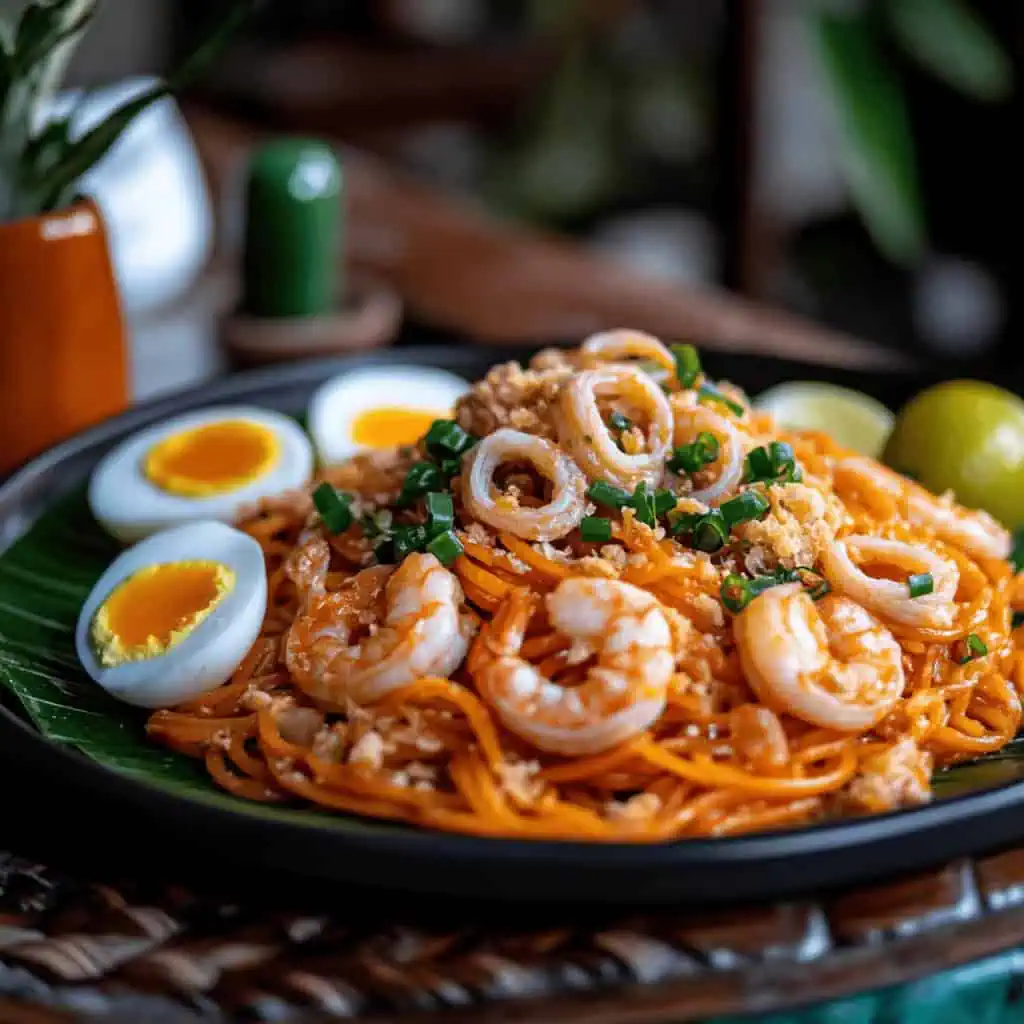
How To Make
- Begin by preparing the shrimp stock. Heat oil in a stockpot over medium heat (180°C/350°F). Sauté shrimp heads until pink and fragrant, then add 6 cups water. Simmer for 20 minutes, then strain and set aside.
- For the sauce, combine the strained stock with annatto powder in a saucepan over medium heat (175°C/350°F). Add shrimp paste and crab fat. Create a cornstarch slurry with cornstarch and water, then add to thicken the sauce. Season with fish sauce, salt, and pepper.
- Prepare the toppings: Pan-fry diced pork belly until crispy (180°C/350°F). Cook peeled shrimp until pink (2-3 minutes), blanch squid rings for 1-2 minutes, and quickly blanch shredded cabbage for 30 seconds. Set all toppings aside.
- Bring a large pot of water to boil (100°C/212°F). Cook the thick noodles until al dente (6-8 minutes), being careful not to overcook. Drain and set aside.
- For assembly, toss the noodles with the prepared sauce until well-coated. Arrange on a bilao or large platter, then top with the prepared seafood, vegetables, smoked fish flakes, crushed pork cracklings, fried garlic, hard-boiled eggs, and chopped green onions. Serve with calamansi on the side.

Tips from Lola's Kitchen
- Save those shrimp heads! They contain the most intense flavor for your stock - never throw them away.
- Timing is everything when cooking the noodles. Check them frequently and remove from heat when they still have a slight bite, as they'll continue cooking in the hot sauce.
- Prepare all toppings before cooking noodles to ensure everything comes together at the right time.
- The freshness of seafood makes a difference - try to purchase your shrimp and squid the same day you plan to cook.
- Balance is key - the sauce should be savory but not overpowering. Use calamansi juice to brighten and balance the richness.
- Watch your heat levels when cooking seafood - high heat for short periods preserves tenderness, especially for squid.
- Let family members help with toppings preparation - it's a great way to bond and teaches younger generations this special recipe.
- The texture of the sauce should coat the noodles without being too runny or too thick - adjust with cornstarch or stock as needed.
Substitutions
- No cornstarch noodles? Rice noodles work well as an alternative.
- Can't find crab fat (aligue)? Add additional shrimp paste for a similar depth of flavor.
- No smoked fish flakes (tinapa)? Try canned tuna flakes, though the smoky flavor will be missed.
- Pork-free version? Replace pork belly with chicken thighs for richness.
- Using frozen seafood? Ensure it's completely thawed and patted dry before cooking.
- No annatto powder? Turmeric can provide color, though the flavor profile will be slightly different.
- Vegetable variations? Feel free to add julienned carrots or snow peas for extra nutrition and color.
Troubleshooting
- Sauce too thick? Add hot shrimp stock gradually until you reach the desired consistency.
- Noodles clumping together? You likely overcooked them. Next time, cook them less and toss with a bit of oil after draining.
- Seafood tough and rubbery? Overcooked! Remember that seafood continues cooking from residual heat, so remove it from heat just as it changes color.
- Sauce lacks depth? You might need more crab fat or to simmer your shrimp stock longer to concentrate flavors.
- Too salty? Balance with a squeeze of calamansi juice and add more blanched vegetables.
- Not enough color? Add more annatto powder or oil to achieve that signature orange hue.
Storage & Reheating
- Always store components separately - noodles, sauce, and toppings in different containers.
- Refrigerate for up to 3 days in airtight containers.
- When reheating noodles, add a splash of shrimp stock to revive them.
- Seafood toppings are best consumed within 24 hours after cooking.
- Do not freeze the assembled dish - the texture will suffer significantly.
- When planning leftovers, consider undercooking the noodles slightly so they don't become mushy when reheated.
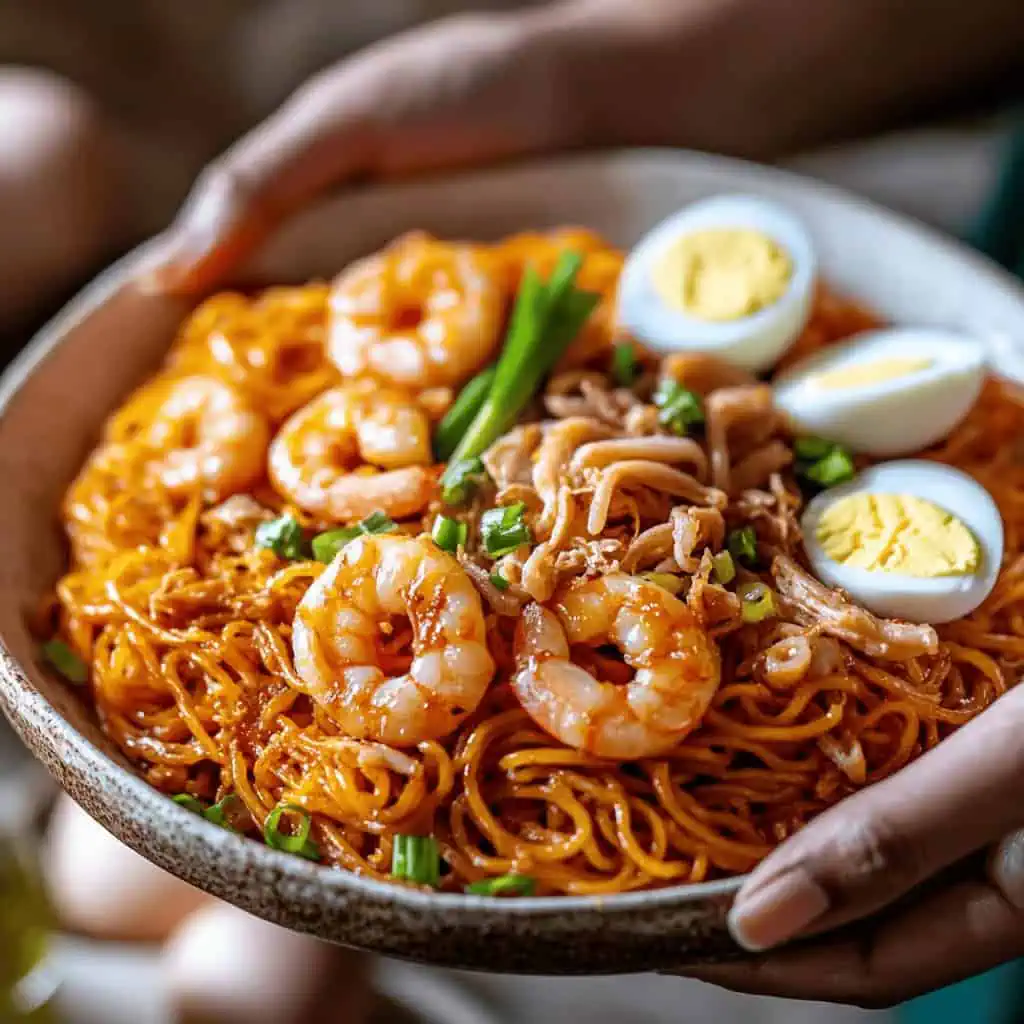
FAQ
Can I make this in advance for a party?
Yes! Prepare all components separately up to 24 hours ahead. Cook the noodles slightly al dente, store them with a little oil to prevent sticking, and make the sauce slightly thicker than needed. Reheat separately and assemble just before serving.
Is this dish spicy?
No, traditional Pancit Malabon isn't spicy, but you can certainly add chili garlic oil or fresh chilies if you prefer some heat.
How do I prevent my noodles from clumping together?
Toss them with a little oil immediately after draining and don't overcook them. If making ahead, rinse with cool water and store with a small amount of oil.
Can I use other types of seafood?
Absolutely! Feel free to add mussels, clams, or even scallops. Just adjust cooking times accordingly as these cook at different rates.
How do I know when my seafood is perfectly cooked?
Shrimp will turn opaque and pink (about 2-3 minutes), while squid becomes opaque white and slightly firm (1-2 minutes). Overcooking will make them tough and rubbery.
What's the best way to serve this at a party?
Traditionally served on a bilao (bamboo tray), but any large serving platter works well. Place calamansi halves around the edges for guests to squeeze over their portions.
I don't have crab fat - is it really necessary?
While traditional recipes call for it, you can still make a delicious version without it. Increase the amount of shrimp paste and perhaps add a bit of butter for richness.
How do I make this dish less fishy-tasting for kids?
Reduce the amount of fish sauce and shrimp paste, and increase the garlic. You can also add a touch of sugar to balance the flavors.
Related
Looking for other recipes like this? Try these:

Authentic Pancit Malabon (Pancit na may Sarsa ng Hipon at Seafood)
Equipment
- Large wok or kawali (bilao-sized) For final assembly and tossing
- Stock pot (kaldero) For making shrimp stock
- Fine-mesh strainer (salaan) For straining stock and removing foam
- Sharp knife (kutsilyo) For preparing ingredients
- Wooden spoons (sandok na kahoy) For gentle tossing of noodles
- Measuring cups and spoons (Panukat)
- Several mixing bowls For organizing ingredients
- Colander (salaan) For draining noodles
Ingredients
For the Noodles (Pancit)
- 1 kg thick cornstarch or rice noodles pancit luglug or miki
- Water for soaking and cooking
For the Sauce (Sarsa)
- 5 cups shrimp stock sabaw ng hipon
- 2 tablespoons annatto powder atsuete or oil
- 2 tablespoons shrimp paste bagoong alamang - Ginisang preferred
- 2 tablespoons fish sauce patis
- 6 tablespoons cornstarch
- 2-3 tablespoons crab fat aligi - Essential for authentic flavor
- Salt and pepper to taste
For the Toppings (Sahog)
- ½ kg large shrimp sugpo, peeled with tails intact
- ½ kg squid pusit, cleaned and sliced into rings
- 250 g smoked fish flakes tinapa
- 4 cups shredded napa cabbage repolyo
- ½ kg pork belly liempo, diced
- 1 cup crushed pork cracklings chicharon
- 1 cup fried garlic bits sinangag na bawang
- 4 hard-boiled eggs itlog, quartered
- Green onions dahon ng sibuyas, chopped
- Calamansi for serving
Instructions
- Begin by preparing the shrimp stock (sabaw ng hipon). Heat oil in a stockpot over medium heat (180°C/350°F). Sauté shrimp heads until pink and fragrant, then add 6 cups water. Simmer for 20 minutes, then strain and set aside.
- For the sauce (sarsa), combine the strained stock with annatto powder (atsuete) in a saucepan over medium heat (175°C/350°F). Add shrimp paste (bagoong alamang) and crab fat (aligi). Create a cornstarch slurry with cornstarch and water, then add to thicken the sauce. Season with fish sauce (patis), salt, and pepper.
- Prepare the toppings (sahog): Pan-fry diced pork belly (liempo) until crispy (180°C/350°F). Cook peeled shrimp (sugpo) until pink (2-3 minutes), blanch squid rings (pusit) for 1-2 minutes, and quickly blanch shredded cabbage (repolyo) for 30 seconds. Set all toppings aside.
- Bring a large pot of water to boil (100°C/212°F). Cook the thick noodles until al dente (6-8 minutes), being careful not to overcook. Drain and set aside.
- For assembly, toss the noodles with the prepared sauce until well-coated. Arrange on a bilao or large platter, then top with the prepared seafood, vegetables, smoked fish flakes (tinapa), crushed pork cracklings (chicharon), fried garlic (sinangag na bawang), hard-boiled eggs (itlog), and chopped green onions (dahon ng sibuyas). Serve with calamansi on the side.
Tips from Lola's Kitchen
- Save shrimp heads for stock - they contain the most flavor
- Don't overcook the noodles - they'll continue cooking in the hot sauce
- Prepare toppings before cooking noodles
- Use fresh seafood for best results
- Balance saltiness with calamansi juice
Nutrition
The Story Behind Pancit Malabon
Nestled in the northern part of Metro Manila, the city of Malabon has long been known as a fishing community where the bounty of Manila Bay meets the culinary creativity of its people. It's here, among the fish markets and seafood restaurants that line the city's waterways, that Pancit Malabon was born – a dish that tells the story of both place and people.
In the 1900s, Malabon was a thriving port town where fishermen would return at dawn with their catches of fresh shrimp, squid, and fish. The local noodle makers, noticing the abundance of seafood, began incorporating these treasures from the sea into their pancit, creating what would become one of the Philippines' most distinctive noodle dishes. The signature orange hue – derived from achuete (annatto) seeds and crab fat – mirrors the golden sunrises that would greet the fishermen returning with their daily catch.
What sets Pancit Malabon apart from other Filipino noodle dishes is its use of thick, chewy noodles that can stand up to the rich seafood sauce. These noodles were traditionally made fresh in Malabon's local factories, though today most home cooks use dried versions that still capture the authentic texture. The addition of aligue (crab fat) to the sauce is a stroke of culinary genius that speaks to the resourcefulness of Malabon's cooks, who learned to use every part of their seafood harvest.
As families moved from Malabon to other parts of Metro Manila and beyond, they brought this beloved dish with them. What was once a local specialty began appearing at special occasions throughout the Philippines – from family reunions to town fiestas. Served on a bilao (traditional bamboo tray), Pancit Malabon became synonymous with celebration and community gathering.
Today, the dish remains a testament to Malabon's fishing heritage. Local restaurants still serve their own versions, each claiming to have the most authentic recipe passed down through generations. Some families guard their secret ingredients zealously – perhaps a particular ratio of shrimp heads in the stock, or a specific way of preparing the crab fat sauce.
While modern interpretations might add new elements like cream or butter to the sauce, traditionalists maintain that the beauty of Pancit Malabon lies in its straightforward preparation that allows the seafood to shine. The dish exemplifies the Filipino cooking philosophy of layers of flavor – the sweetness of fresh shrimp, the brininess of crab fat, the umami of smoked fish, all harmonizing in one memorable plate.
Walking through Malabon today, you can still find corner stores selling fresh seafood and noodle shops that have been operating for decades. The aroma of garlic being fried and shrimp stock being prepared wafts through the streets, especially during mid-morning when cooks begin preparing for the lunch rush. It's these sensory experiences that make Pancit Malabon more than just a noodle dish – it's a cultural artifact that tells the story of a city's love affair with the sea.
For many Filipino families, making Pancit Malabon is a labor of love that brings people together. The process of peeling shrimp, preparing the stock, and arranging the numerous toppings becomes a shared activity, often accompanied by storytelling and laughter. It's this communal aspect that has helped preserve the tradition of Pancit Malabon, passing it down from one generation to the next.
Whether enjoyed at a humble carinderia (local eatery) in Malabon or prepared for a special occasion in a Filipino home anywhere in the world, Pancit Malabon continues to evolve while maintaining its essential character. It remains a beloved example of how local ingredients, cultural heritage, and culinary creativity can come together to create something truly extraordinary.






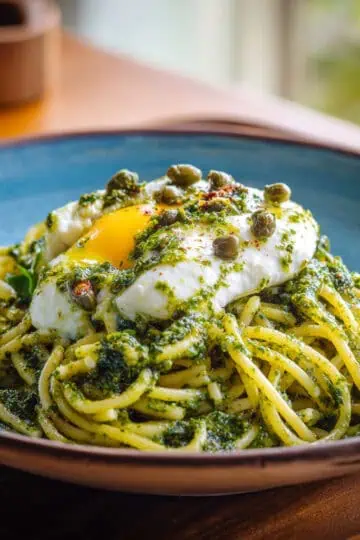
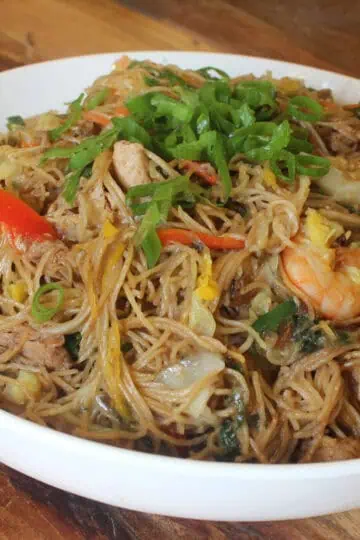
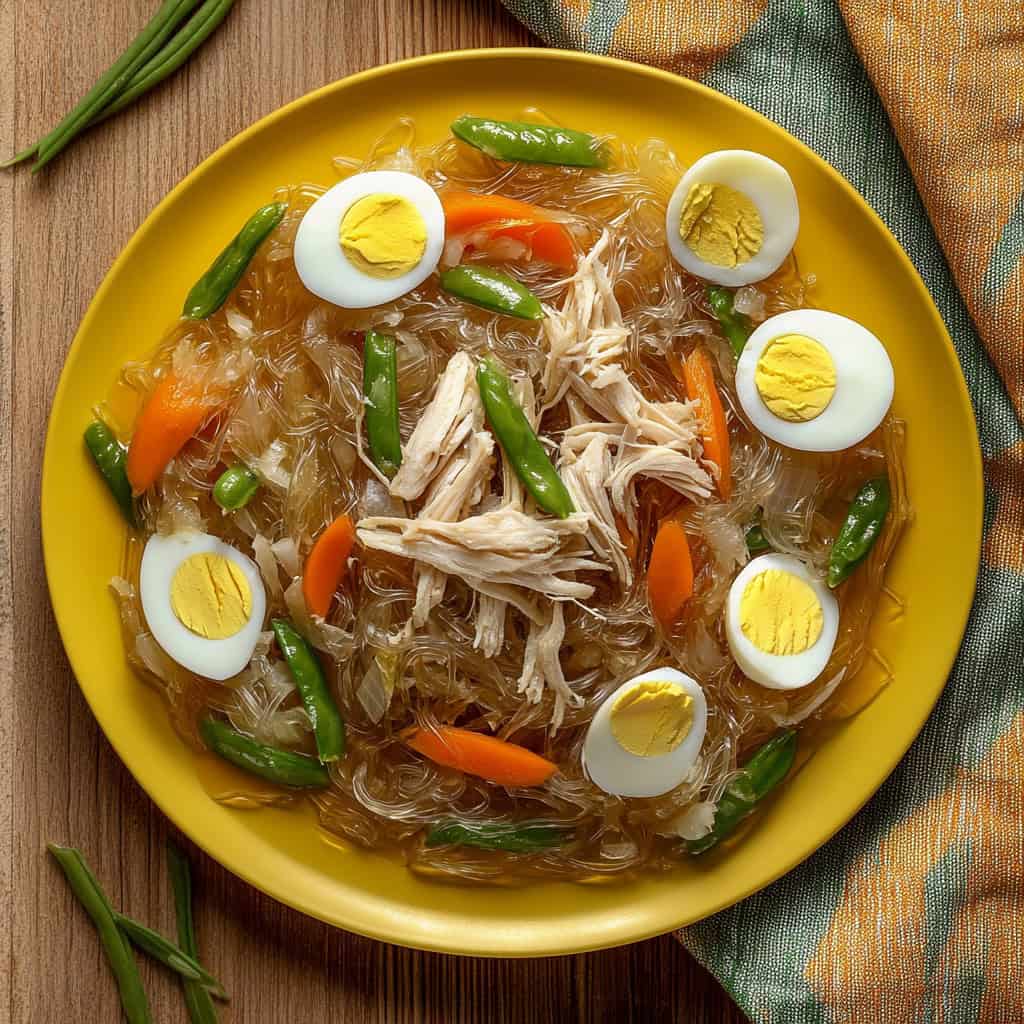
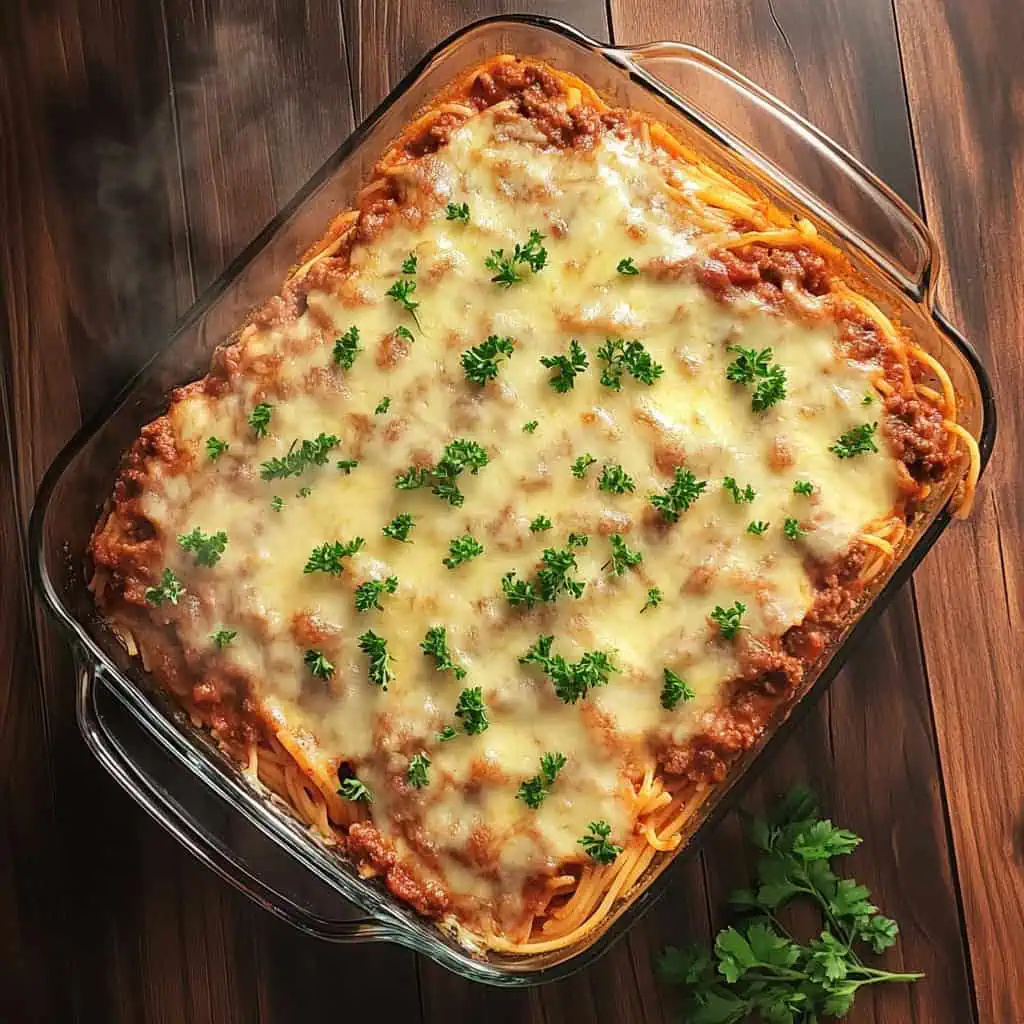
Comments
No Comments